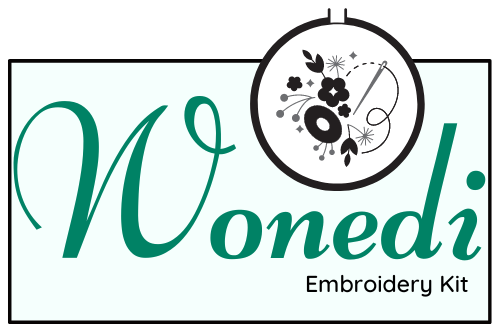Embroidery Kit
Embroidery for Beginners: Step-by-Step Guides and Tips to Get Started
Embroidery, the art of decorating fabric with needle and thread, has been practiced for centuries, spanning cultures and continents. From delicate floral patterns to intricate designs, embroidery offers a world of creative possibilities for both seasoned artisans and beginners alike. If you’re new to embroidery and eager to dive into this timeless craft, you’ve come to the right place. In this comprehensive guide, we’ll walk you through the essentials of embroidery, from selecting your materials to mastering basic stitches and creating your first masterpiece.
Getting Started: Essential Materials
Before you begin your embroidery journey, it’s essential to gather the necessary materials. Here’s what you’ll need:
- Embroidery Hoop: A hoop holds your fabric taut while you stitch, making it easier to work with. Opt for a hoop that matches the size of your project.
- Fabric: Choose a fabric with a tight weave, such as cotton or linen, for optimal results. Avoid stretchy fabrics, as they can be challenging to embroider.
- Needles: Embroidery needles come in various sizes and types. Start with a pack of assorted needles to experiment and find what works best for you.
- Embroidery Floss: Floss is available in a rainbow of colors and consists of six strands that can be separated to achieve different thicknesses. Invest in a basic set of colors to start, and expand your collection as you progress.
- Scissors: Sharp, small scissors are essential for cutting your floss and trimming excess fabric.
- Transfer Method: Choose a method for transferring your design onto the fabric, such as tracing paper, water-soluble pens, or iron-on transfers.
- Design: Select a simple design to begin with, such as a floral motif or geometric pattern. As you gain confidence, you can tackle more complex designs.

Mastering Basic Stitches
Now that you’ve gathered your materials, it’s time to learn some basic embroidery stitches. These foundational stitches form the building blocks of countless embroidery projects. Here are a few to get you started:
- Back Stitch: The back stitch is perfect for creating outlines and adding fine details to your embroidery. Start by bringing the needle up through the fabric, then insert it back down slightly ahead of the starting point. Continue stitching, keeping your stitches evenly spaced.
- Running Stitch: This simple stitch is ideal for creating dashed lines or filling in larger areas. To execute a running stitch, bring the needle up through the fabric, then insert it back down a short distance away. Repeat this process, keeping your stitches uniform in length.
- French Knot: French knots add texture and dimension to your embroidery. To make a French knot, bring the needle up through the fabric at the desired location. Wrap the floss around the needle several times, then insert the needle back down close to where it came up. Gently pull the floss tight to form a knot.
- Split Stitch: Split stitch is similar to the back stitch but with an added element of texture. Begin by bringing the needle up through the fabric, then insert it back down halfway between the starting point and the previous stitch. Continue stitching, splitting each stitch with the needle as you go.
- Satin Stitch: Satin stitch is perfect for filling in shapes and creating smooth, solid areas of color. Bring the needle up through the fabric at one edge of the shape, then insert it back down at the opposite edge. Continue stitching parallel rows until the area is filled.
Creating Your First Project
Now that you’ve mastered some basic stitches, it’s time to put your skills to the test and create your first embroidery project. Start with a simple design and take your time as you work through each stitch. Remember to experiment with different colors and textures to bring your design to life.
As you stitch, pay attention to your tension and the placement of your stitches. Consistent tension and even stitches will result in a polished finished product. Don’t be afraid to make mistakes; embroidery is a forgiving craft, and imperfections often add charm to the final piece.
Once you’ve completed your embroidery, remove it from the hoop and gently press it with an iron to remove any wrinkles. Trim any excess fabric, leaving a border of about one inch around the design.

Conclusion
Embroidery is a rewarding and versatile craft that offers endless opportunities for creativity. Whether you’re embellishing clothing, creating personalized gifts, or simply exploring your artistic side, embroidery allows you to bring your imagination to life one stitch at a time.
With the right materials, basic stitches, and a bit of practice, you’ll soon be on your way to creating beautiful embroidered works of art. So gather your supplies, choose a design, and let your creativity soar as you embark on your embroidery journey. Happy stitching!

